Since the emergence of COVID-19, scientists have conducted 29,000 peer-reviewed research articles on the disease, per PubMed. That’s on top of nearly 5,000 published COVID-19 preprints, over 2,000 clinical trials, 150 vaccines in the works, and more than 30 issued patents, according to NewsRx’s BUTTER platform.
For comparison’s sake, during the first six months of the 2009, H1N1 swine flu outbreak, a mere 2,000 peer reviewed research articles were published on the new flu. 29,000 articles represent a staggering amount of worldwide scientific muscle directed against the deadly pandemic.
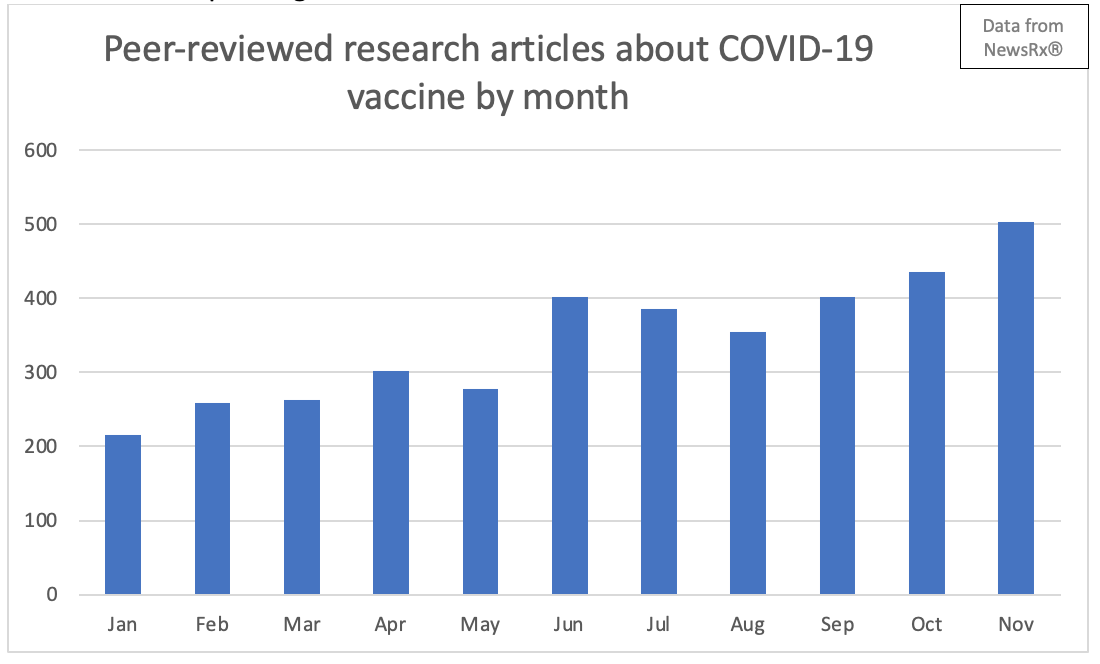
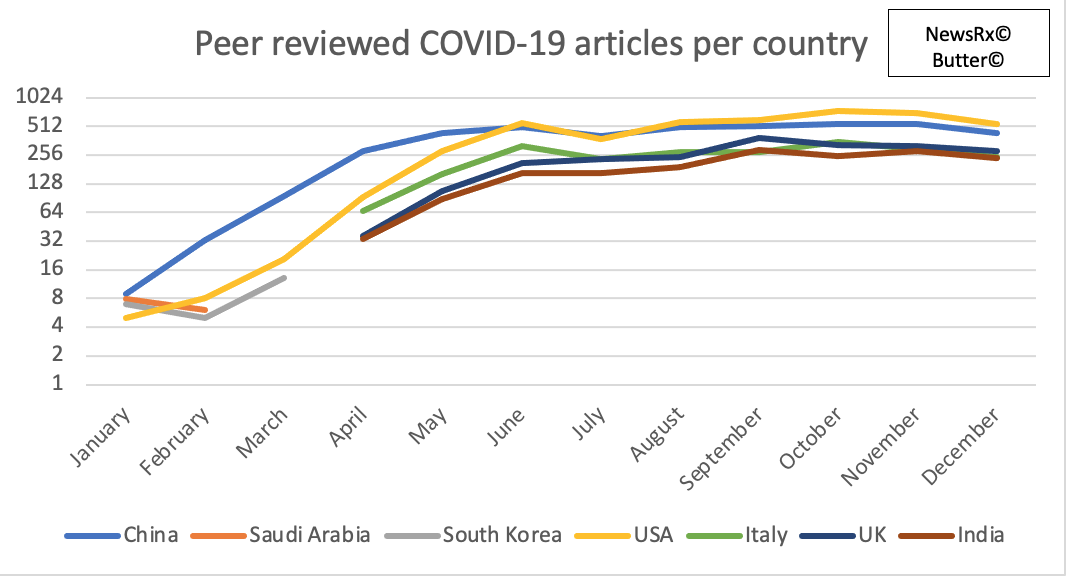
Clearly, science did not simply respond to the virus with business as usual. Scientists and labs in a variety of fields tossed their business-as-usual to focus on the outbreak. Scientific publishers committed to new standards for transparency and started to fast track coronavirus-related research.
New forms of scientific discussion and debate have also welled up on social media as scientists battle against a misinformation ‘infodemic’. This is all on top of new ways of scientific working, publishing, and communicating. The staggering coronavirus pandemic, which has already taken nearly 500,000 lives, has changed science for good.
Here’s the rundown on how the COVID-19 coronavirus has transformed science—and whether or not it’ll last.
The evolving COVID-19 pandemic created a pressing need for rapid-fire, accurate scientific evidence.
A pandemic breaks the standard research process
Putting out a piece of peer-reviewed research is essential to create sound policy that can respond to a new disease. It’s also an exhaustive process that can’t keep up with a rapidly growing pandemic.
From start to finish, it takes most scientists nearly nine months on average to put out a paper, not including the amount of time required to actually conduct a study. Here’s what a typical timeline looks like:
|
Task |
Time required |
|
Write a grant application – put together a research proposal, revise, and submit |
2-6 months |
|
Await grant results and receive funding |
2-6 months |
|
Conduct research study and write paper – Research studies can be completed and papers written in as short as a week and as long as five years |
Variable |
|
Submit to peer reviewed journal – Papers undergo desk review, typically within two weeks, and then are sent out for a first round of peer review by other scientists in the field. |
2-4 months |
|
Complete rounds of revisions, upload article online, and prepare article for print – The number of revisions has the potential to greatly extend the length of the process |
1 month |
The impact of labs shutting down, while varying greatly depending on the scientific field, fundamentally prevents many aspects of fieldwork or hands-on research from getting done, notably scientists that perform experiments on plants or animals.
But let’s assume that a study on coronavirus happened remotely, or using data from governments. Per the timeline above, this means that if you submitted an article about coronavirus in February to a peer-reviewed journal and it underwent the standard process, it would likely have come out in June. In such a slow-moving scenario, the scientific community would not be able to come together quickly on a consensus on the efficacy of measures like social distancing or face masks.
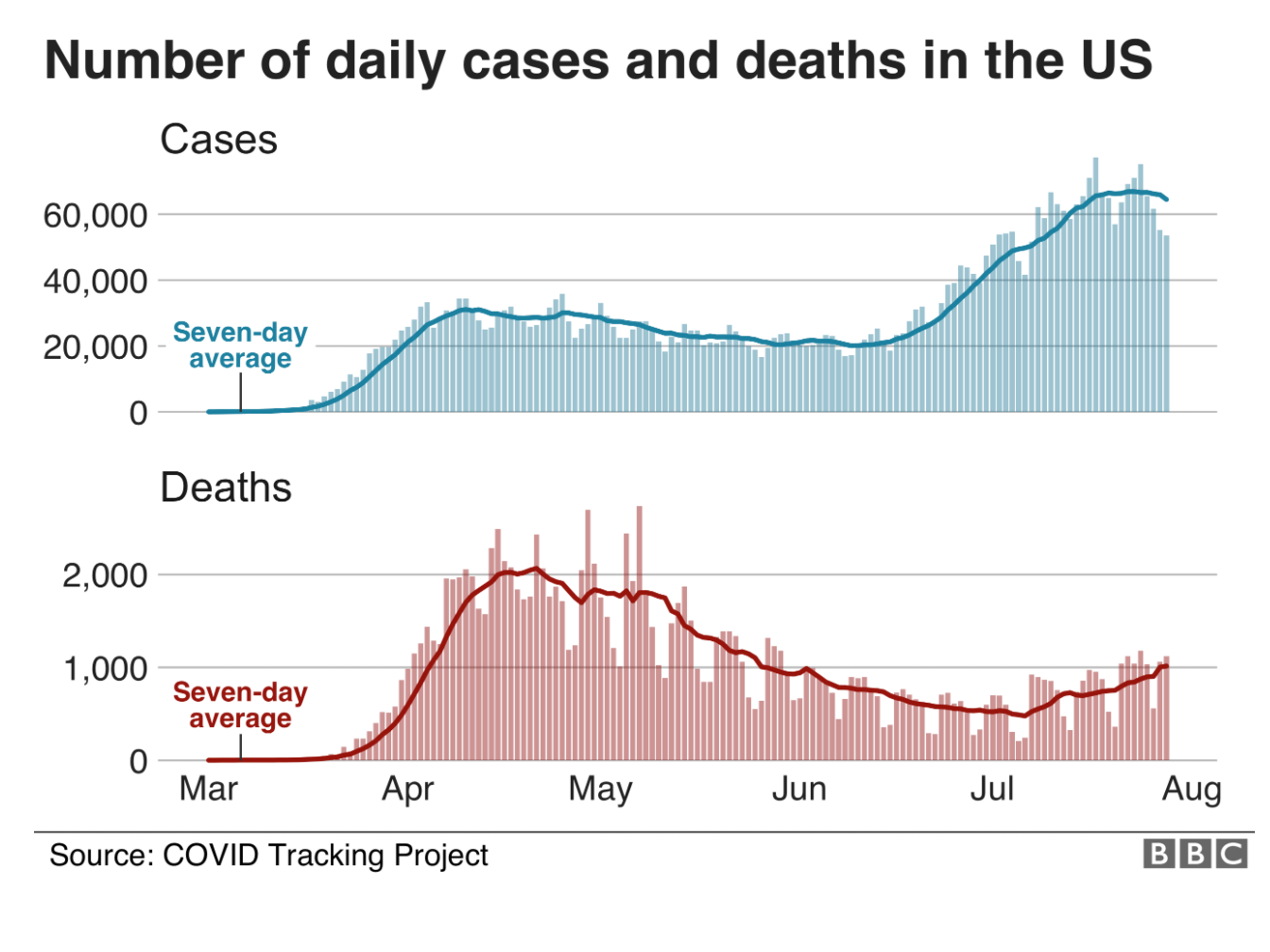
Peer-reviewed research is not a fast process, and the number one thing that a disease outbreak demands in response is speed. Speed of action was a major factor in Taiwan’s success in limiting its outbreak. Lives depend on a rapid coronavirus response.
Fortunately, scientists adapted. Labs have figured out how to conduct many types of research remotely. A disastrous timeline, where solid COVID-19 research would not be available until mid-summer, were not by any means what actually played out.
But speed of research review and remote working is far from the only way that coronavirus has changed science. Coronavirus has become an accelerating force for a number of trends that were already working their way through the world of science—such as the rise of preprints, the growing relevance of open access research, and the prevalence of scientific discussion on social media.
Here are some of the ways that science has transformed in the age of COVID (and whether or not those changes will last for good).
Projects shifted, put on-hold, and accomplished remotely
While some research labs are starting to reopen this summer, for three months, a lot of research was simply put on hold. Mice were euthanized, E. coli put in the freezer. Some scientists were able to continue computational work from home, like satellite observations, without interruption. Scientists that already had data collected or data from previous experiments have turned to focus on analyzing data and writing papers.
Other researchers pivoted to devote their expertise towards the fight against coronavirus, with scientists at London’s Francis Crick Institute going as far as to turn their lab into a coronavirus testing facility. At Montana State University, scientists in disciplines as diverse as microbiology and plant pathology have dropped old research areas for coronavirus-related projects.
A faster peer-review process
An accelerated peer-review process has been executed by many peer-review journals in both the COVID crisis as well as in the previous SARS and Ebola outbreaks.
Jennifer Zeis, a director of communications and media relations at the New England Journal of Medicine, told Vox that during a crisis, “everything is expedited tremendously.” That means faster initial and final review by editors, faster responses by peer reviewers, and faster work by the production staff.
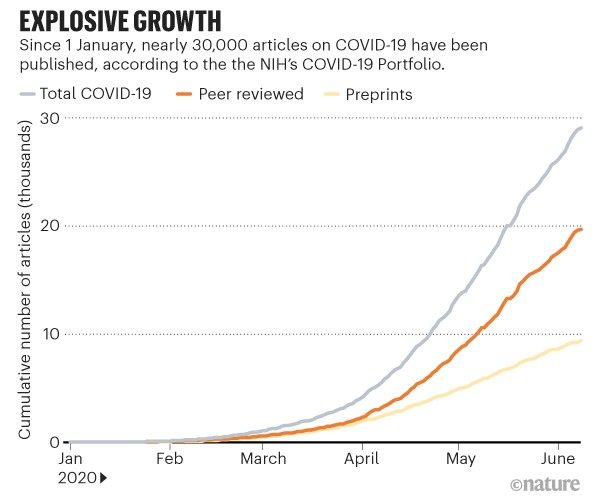
The expedited work by journals is impressive. The New York Times reports that a recent paper in Science, describing a key coronavirus protein, was published nine days after it was submitted. Another COVID-19 paper in the New England Journal of Medicine was posted within an insane 48 hours of submission.
An April preprint analyzing response times for COVID-19 research papers in medical journals found that average turnaround had fallen from 117 to 60 days. Clearly a faster peer-review process is possible when necessary. It’s unclear if this speed can be maintained when the crisis is over, but the persistence of the pandemic means that an accelerated, speedy peer-review process is here for the medium-term, at least.
More international collaboration
Never before have so many researchers in every country around the globe been so focused on a single scientific topic. As a result, international collaboration between scientists is at an all-time high.
Many scientists are less concerned about credentials and credit and have been more willing to share online repositories of data. While country borders have closed, borders for scientists have become completely irrelevant.
One small but representative example is a discovery that started at the University of Pittsburgh: that a ferret exposed to COVID-19 particles developed a fever. The lab shared the discoveries with scientists around the world on a World Health Organization conference call within two hours of the discovery.
Since then, the Pittsburgh lab abandoned working on an academic article and instead has been collaborating on a vaccine with the Pasteur Institute in Paris and the Austrian drug company Tehmis Bioscience in a consortium funded by the Norway-based Coalition for Epidemic Preparedness Innovation. The consortium is currently in talks with the Serum Institute of India, one of the world’s largest vaccine manufacturers.
Explosive growth in the use of preprints
One of the biggest shifts seen with coronavirus has been the increasing volume of and attention paid to preprints. A preprint is a version of a scientific paper published in an accessible platform that precedes formal review and publication in a traditional peer-reviewed journal. Preprints have in fact been rising in popularity over the past several years due to various advantages, including opportunities for feedback and collaboration, but above all, the near-instant dissemination process: preprints are typically published within a week of submission.
The pandemic has thrown a grenade into preprint trends. Views and downloads are up more than a hundredfold on medRxiv, a preprint server for medical papers, while the number of new papers uploaded is up fivefold. The rapid-fire publishing process allowed by preprint websites allows physicians, scientists, and policy-makers to act much more quickly on discoveries-related to COVID-19, collectively analyzing the significance and accuracy of studies on social media.
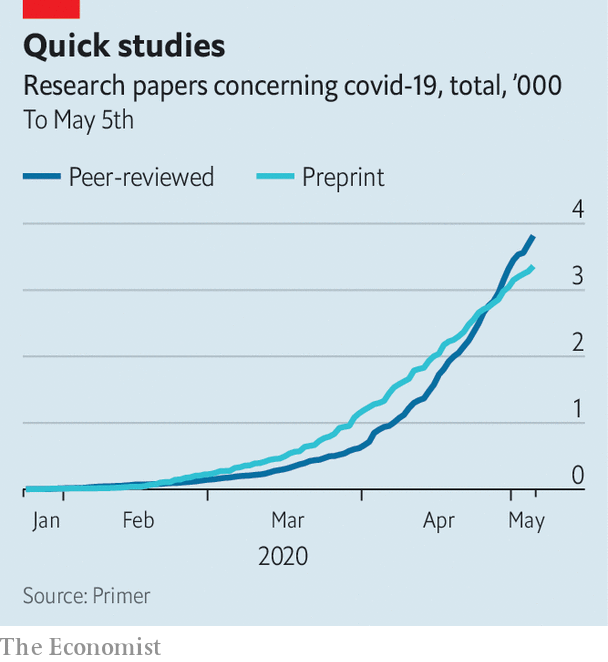
Poor studies getting more attention
The natural result of more preprints and faster studies, however, is more flawed studies getting attention. Countless poor COVID-related studies have made the news in the last few months. One particularly egregious example was an early February paper that argued the similarities between the genome of the novel coronavirus and the genome of HIV. Another flawed COVID preprint (that even had simple math errors) from April claimed that 2.5% of the population had already been infected. The data ended up spreading widely on social media and it turned out that the authors of the study failed to disclose a potential conflict of interest: one of the funders was the founder of JetBlue, an individual with vested interest in reducing concern about the virus.
These poor studies are just the tip of the iceberg. One of the simple facts about preprints is that they are incomplete drafts of research, but when in the wrong hands, or when poorly covered by the media, they can be passed off as conclusive studies. In May, an LA Times article covered a preprint that claimed that coronavirus had mutated to become more transmissible—a preprint that researchers agreed likely had “egregious errors.”
Changing preprint standards
As a result of these poor studies making waves, researchers, critics and preprint servers are weighing how to improve the preprint process. It would change the fundamental nature of preprints to insist on some form of peer review, so some scientists argue that the best solution is for researchers to not put conclusions in preprints.
Some preprint servers have stepped up their standards. bioRxiv has started screening out papers that make claims based on computational models, deigning them too speculative. Other servers are now reviewing content with an extra lens of scrutiny in order to screen out papers that might cause harm or fuel conspiracy theories.
More use of social media
Scientific communications have also been forced to evolve. While workplaces in every field have gone online, this movement in science builds on the long-term trend of scientists increasingly using social media to communicate their findings and discuss trends and studies in their field.
COVID has accelerated this trend. Labs organize via Slack. Scientists, freed from the restraint of geography and institution, reach out to potential collaborators all around the world, and engage in robust discussions about new coronavirus discoveries on Twitter and fight against coronavirus misinformation.
All of this digital communication in turn helps further speed up scientific processes such as sharing data and discussing studies. One recent preprint found that COVID-19 studies tend to be highly disseminated on social media well before they have the chance to be cited in other studies. There is already abundant evidence that robust use of social media can actually boost scientists’ careers (highly-tweeted papers were 11 times more likely to be cited), so it’s only to be expected that more scientists will start to be active on social media platforms.
Accelerated grant processes
In addition to scientists and journals speeding up their timelines, both government and private funders have accordingly ramped up the speed of their grant processes. Some programs are even offering a one-hour application process and a 48-hour turnaround, a system known as rapid-response grant-making.
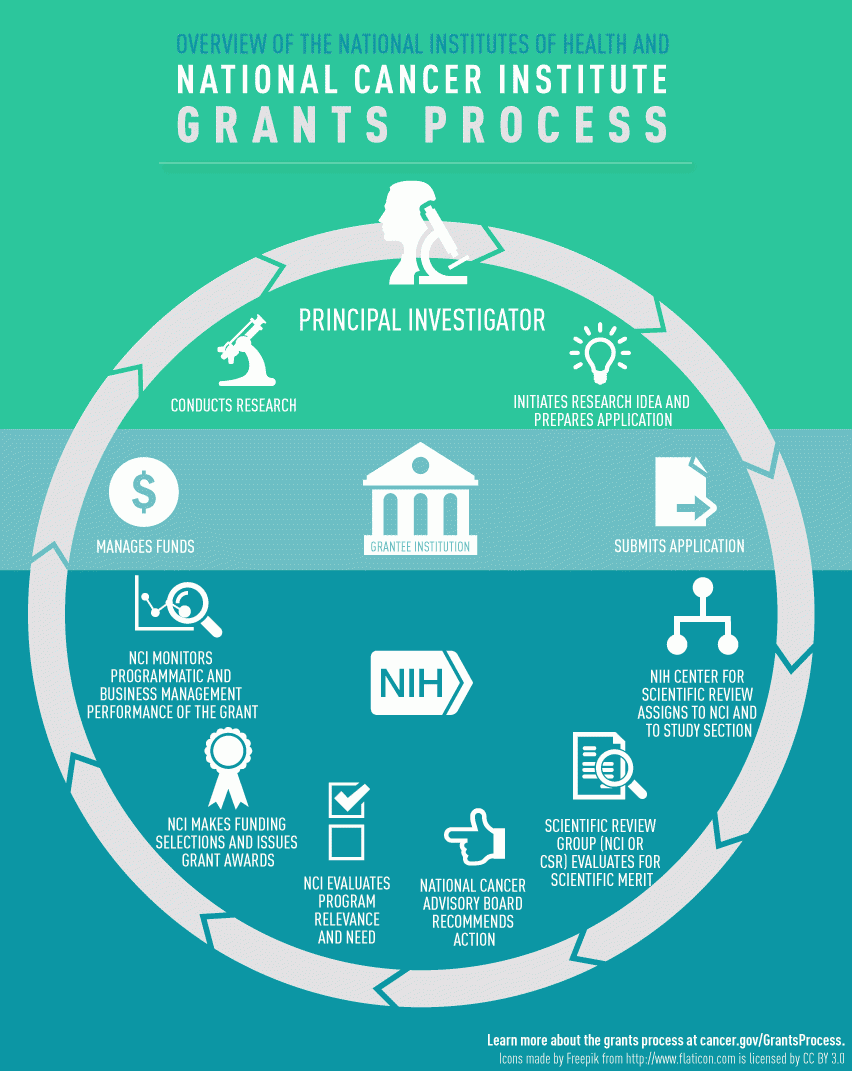
Silvana Konermann, a Stanford biochemistry professor who led the grant review process at Fast Grants, told Vox that their process is “very much rigorous peer review, just accelerated.” These rapid-response grant programs essentially skip all of the bureaucratic delay and deliver money to people who can use it right away.
While these super-fast grant programs seem less likely to remain in place once the COVID-19 crisis has died down, there is ample evidence that above a certain threshold of grant quality, reviewers almost never agree which projects are best. That suggests that a lot of time in a multi-month review process is wasted, and is a strong argument for maintaining faster grant-making decisions far into the future. It would be a huge accelerant for all scientific fields if grant-decisions were made in a week rather than four months.
Remaining gaps
Need for increased transparency
One way that science needs to further adapt to the pandemic is with increased transparency of research materials, such as study protocols, data, and analysis plans. Additional transparency will encourage error checking and boost collaboration, reducing the likelihood of poor studies.
Need for better science journalism
Just as the coronavirus has challenged science, it has also challenged science journalism. Preprints are a new beast, and the media needs to be more thoughtful about how to cover preprints, given that they are not conclusive studies with the same weight as peer-reviewed articles. Scientists have suggested that reporters talk to several unaffiliated scientists about their impression of a study when reporting on a preprint.
Are these changes for the better?
For the most part, absolutely. The evolving COVID-19 pandemic created a pressing need for rapid-fire, accurate scientific evidence. The divergent trends in various countries around the world can often be tied to policy based on scientific evidence: what kind of social distancing measures? What degree of mask use? There is a dire need for robust scientific discovery, debate, and accompanying policy that can keep up with the pandemic—which makes the boosted speed absolutely paramount.

Even more exciting is the likelihood that some of these changes will stick around for the long run. A faster scientific process, while certainly bearing a fresh load of risks, is more agile in its crisis response. In all likelihood, researchers will continue to write preprints in addition to peer-reviewed articles, and publications will be able to repeat efforts to speed up the process during a crisis. The emergence of new publishing models, such as overlay journals, which are built on the open peer review of preprints, will introduce new infrastructure to help scientists keep up the pace while maintaining higher quality conclusions.
Many scientists are in agreement that the pandemic has created a new world for science. Further evolution will be required to keep up with future crises, but the scientific community has proven itself capable against the titanic hurdle of the coronavirus pandemic.

